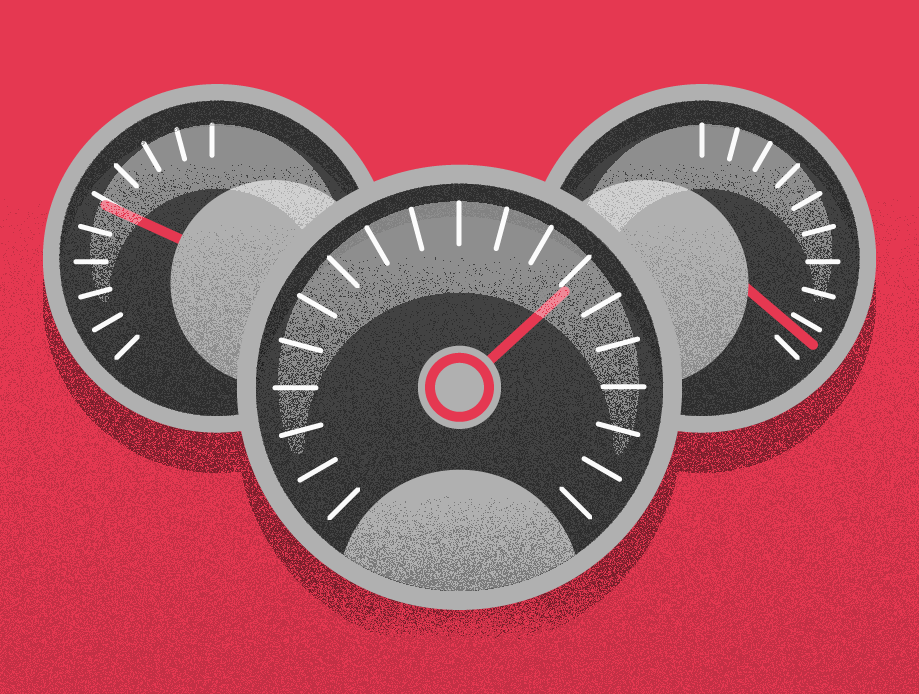Having an efficient and compelling Content Marketing strategy is a must-have for companies searching for competitiveness in the future.
This method allows for low-cost, highly engaging media focused on attracting more leads with higher conversion rates. It also helps to build a positive and trustworthy image for your brand.
But executing any plan is all about measuring and adjusting. To reach the success you want for your actual and next campaigns, you need to collect and analyze data from Content Marketing KPIs.
So how about knowing more about what are performance indicators and which are the best for your team? In this post, we will talk about:
- What are KPIs?
- What are the main 10 Content Marketing KPIs to track?
- Why is it so important to act while measuring?
Download this post by entering your email below
What are KPIs?
So let’s start with the basics. A Key Performance Indicator, or KPI, is any measurable number that is analyzed through a set period and a fixed methodology.
That way, the constant measurement gives the company a sense of progress — positive or negative. We can use a simple example to understand it.
Imagine that a store decided to measure the number of visitors they have. What they have to do first is to count each person that comes in through the door. That is the number.
But then, you need to create a methodology. The store decides it will count visitors every day, but they want a weekly sum.
At the end of the year, they know in what weeks the store is busier and in what periods the movement is weak. They correlate the data with seasonal holidays, special dates, and so on.
Then you have a complete map. The store can prepare to profit more when demand is strong and do some promotions and sales to improve numbers when it is low.
Resuming it, a KPI is a number plus context. Those who know how to do it have more opportunities to interpret and make decisions based on reliable data.
It is the kind of efficiency that businesses of the future have to acquire to be competitive. Not only in sales and operation but in marketing too.
What are the main 10 Content Marketing KPIs to track?
Your team also needs to be as effective as other levels of management within a company, and even more now, since Digital Marketing demands that kind of intelligence.
Furthermore, each part of your work can be measured. In this text, we want to focus mainly on Content Marketing because it is one of the strategies that can be improved by monitoring KPIs.
So let’s take a look at 10 of them!
1. Unique visits
The first KPI in this list is the most simple and direct, used as a base for a lot of insights about a business’ online presence.
It shows the total number of unique views on a page — the real number of visitors. It can be easily measured by a tracking tool such as Google Analytics.
In a Content Marketing context, the most important unique visits are those at the company’s blog and lead generation content, such as ebooks, webinars, and videos.
With time, this number shows how your team’s effort and investment are paying off as a growing audience gets to know your brand and becomes leads.
2. Pageviews
A great Content Marketing strategy is not only about volume. It is especially about engagement. This is why you also need to use the same tracking tools to monitor views.
How many pages does an average user visit when they come to your blog?
Focusing on this question can help you design more engaging content, one that motivates the user to click on internal links and explore a little further what your brand has to offer.
If marketing goals with content are about sticking in people’s minds with educative, reliable information, then an improving page view count will show you are on the right path.
3. Time on page
This is the third KPI directly showing you how well your blog is performing.
When you combine the number of visitors, the number of pages they are visiting, and the time spent doing that, the marketing team has a full picture of visibility, attractiveness, and engagement.
Again, the tool you use to track, such as Google Analytics, will provide that information. You just need to determine the necessary methodology to monitor these KPIs that are aligned with your goals.
4. Bounce rate
The bounce rate is still in the same area as the previous indicators, but this one is a KPI supposed to be suppressed.
It shows you the percentage of visitors that leave a page immediately after landing on it.
When this rate is high, you have two theories to consider:
- either your blog has badly organized and structured visual information;
- or the content in it doesn’t match the promise made by the title or the description.
The problem with both scenarios is creating expectations and not meeting them. It can be seen as deception and distrust — and it is not good at all for a team working on an image of authority for the brand.
5. Heat map
There are specific tools that can track mouse movement and clicks or touches on links from each user visiting your site.
That way, you create a visual and easy-to-comprehend heat map. It’s a more subjective KPI, but it shows which areas are more appealing or natural to browse inside a blog or website.
It can be used to redesign the layout or rearrange the information so that is more efficient for your content and appealing to the audience.
6. Source of traffic
All the previous KPIs are more related to the company’s blog or website, a place you have complete control over.
Now, let’s talk about indicators showing your content performance on the internet as a whole.
The source of traffic shows the split between different paths leading to your posts and other media, such as:
- paid ads;
- organic SEO;
- social media;
- newsletters and email in general;
- direct links;
- links on other websites and blogs.
A successful Content Marketing strategy comes from a well-balanced pie chart. But you can use numbers to rank those sources that bring more engaged leads.
The best practice here is to depend less and less on paid ads. When you start getting visitors from other organic sources, your campaign becomes efficient and self-sufficient.

7. Lead generation content downloads
Lead generation content, such as ebooks and webinars, has a special role in Content Marketing: they usually bring not only leads but also more information about them.
More downloads mean more email addresses and more populated surveys. It means your audience is interested in and engaging with your brand.
It is another easy KPI to monitor. To track this number, you’ll need a marketing automation tool that will give you the number in real time.
8. Social media numbers
You can’t freely track visits and pageviews on social media, but you have some very important indicators to measure the success of your campaigns.
We are talking about the number of followers, shared content, likes, and comments. Each interaction counts for the brand’s online presence and helps your team focus on the channels that engage more.
9. Newsletter indicators
A newsletter is great for Content Marketing because it is a more controlled and direct way of communicating and spreading information.
It also shows relevant numbers about engagement. Fortunately, automated email solutions offer easy-to-read and analyze metrics, such as the number of emails sent and read, and the number of clicks.
10. Lead generation rate
How many leads is your content generating? How many of them are you converting?
In the end, these questions show the success of a Content Marketing campaign.
The way you measure it is simple: the number of unique interactions with your blog and other materials (views, clicks, and downloads) divided by the number of new leads in the same period.
The result is the probability each new person has become interested in your brand.
Bearing in mind this performance indicator can help you create pieces with immediate impact. You can test new ways of approaching the audience, new kinds of informative and interactive content, and new sources of traffic that are worth investing in.
Why is it so important to act while measuring?
This last topic is a great way of reaching an important conclusion when we talk about indicators. A lot of CMOs and other C-Level professionals love to track and analyze data, but, for some reason, think that’s enough.
You can’t fall into the same trap. Numbers are nothing without action. Your job is to understand the story these indicators are telling you.
Remember what we said: a Content Marketing KPI is number plus context. A team that invests in constant improvement and innovation will never fall behind the competition.
So how about getting to know a lot more about KPIs? Expand your knowledge in the matter by reading our article that shows metrics for Digital Marketing as a whole!








